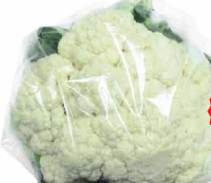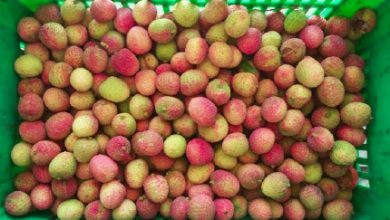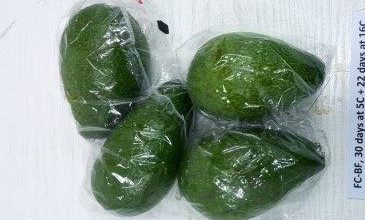Reduction of fruit and vegetables wastage by retail packaging
Current research conducted at the Volcani Center seeks new implemental solutions to reduce food losses
Ron Porat rporat@volcani.agri.gov.il , Amit Sabag

Food loss and waste
The issue of food loss and waste reduction recently achieves much public attention as part of worldwide efforts to combat global hunger and improve food security. Studies conducted by various international organizations led by the FAO indicated that about one third of all food produced on the planet and about a half of all fruit and vegetables (F&V) are lost or wasted and not consumed.
Food losses occur during five key stages along the food supply chain: agricultural production, postharvest handling, processing, distribution, and consumption. In developed countries, large portions of food losses occur during retail and consumption, a phenomenon termed “food waste”. More specifically, detailed studies conducted in the US and other countries, including Israel, indicated that ~11-12% of F&V losses occur at the supermarkets and ~20-30% at the consumers’ homes. Therefore, it is necessary to develop advanced postharvest technologies to maintain F&V quality and reduce losses during marketing and consumption.
 |
Fig. 1: Retail packages of F&V.
Retail packaging
Most F&V are currently marketed in supermarkets loose without packaging. However, application of retail packages may retain produce quality and reduce wastage (Fig. 1). The key advantages of using retail packaging are: 1) it provides physical protection from wounding and bruising; 2) it provides a high humidity environment preventing water loss and shrinkage; 3) it may provide a modified gas atmosphere that delays ripening and senescence processes; 4) it promotes food safely by preventing contamination and hand touching; 5) it allows labelling of produce information and recommended storage instructions. Nonetheless, implementation of improper packaging materials and/or perforation rates may rather cause damage and accelerate wastage by creating excessive humidity and condensation that enhance decay and/or development of anaerobic conditions leading to anaerobic fermentation and off-flavors.
 |
Fig. 2: Effects of optimized retail packages on maintaining the quality of F&V after simulation of marketing and 2 weeks of storage in a home refrigerator.
Optimization of retail packaging for F&V
In our current studies, we are evaluating the effects of various packaging materials, including polyethylene, polypropylene and polyamide bags and plastic shells, as well as various perforation rates, from laser beam micro-perforations till largely ventilated macro-perforations, on maintaining quality and reduction of F&V losses during retail marketing and consequent storage in the consumer’s homes. The results demonstrated that optimally designed retail packages are very effective in maintaining produce quality and reduction of wastage. More specifically, using retail packages prevent water loss and shrinkage thus maintaining produce freshness, and in some cases retail packages also reduced decay incidence and development of certain physiological disorders (Fig. 2). The enclosed picture demonstrates, for example, the visual appearance of cherry tomatoes, cucumbers, eggplant, cherries and pomegranate fruit after simulation of retail marketing (2 days at wholesale/logistic center at 15°C + 2 days at the supermarket at 24°C) and 2 additional weeks of storage in a home refrigerator at 4°C.
Overall, we demonstrated that using optimally designed retail packaging maintains F&V quality during marketing and consequent home storage, and thus may contribute to the current global effort to reduce food losses and waste. Nonetheless, in addition to choosing the proper plastic material and perforation rate, successful implementation of retail packaging for maintaining F&V quality requires application of proper postharvest handling procedures, such as sorting, cleaning and disinfection, and proper maintenance of the cold chain from packaging till consumption.
*Dept. of Postharvest Science of Fresh Produce, ARO, the Volcani Center, Rishon LeZion 7528809, Israel.




